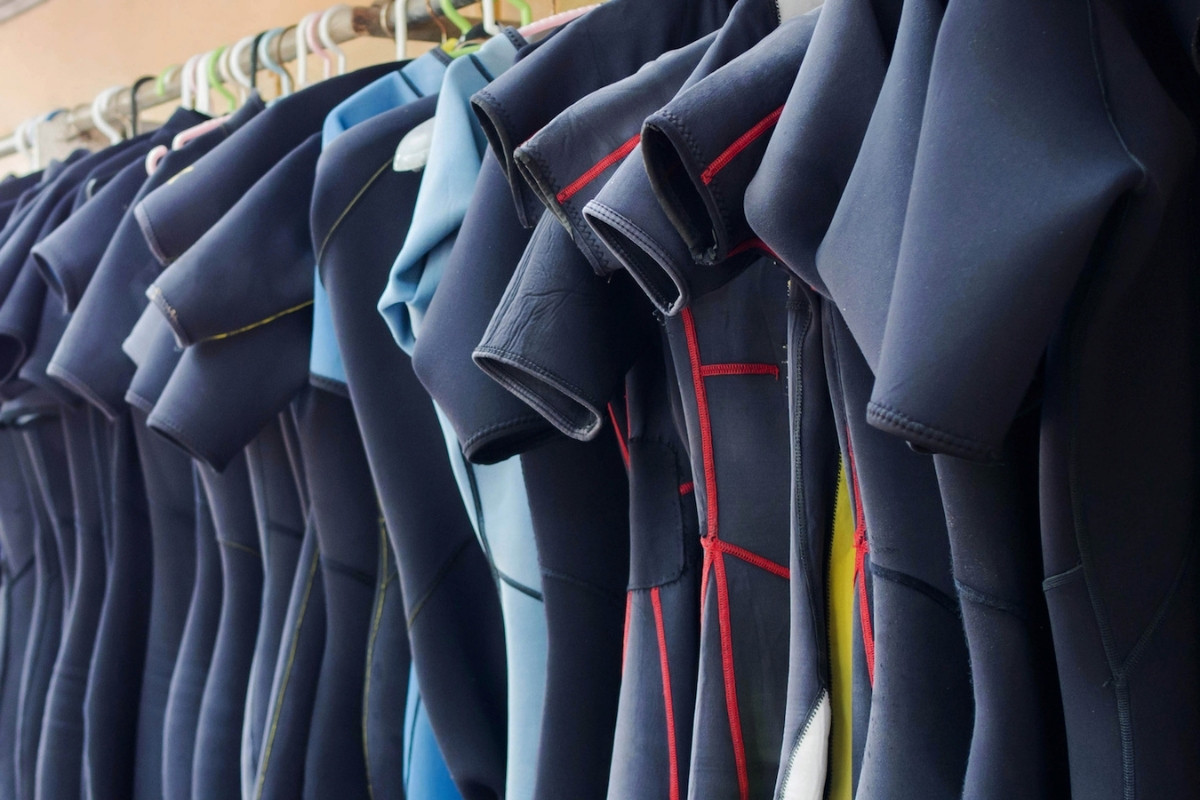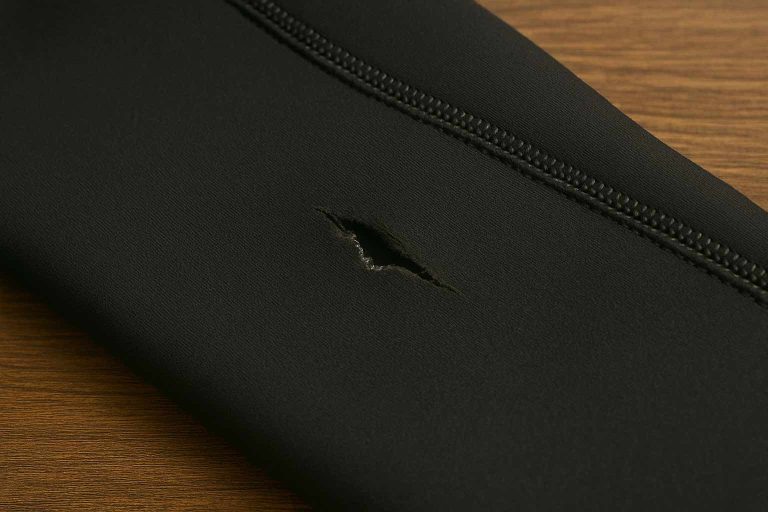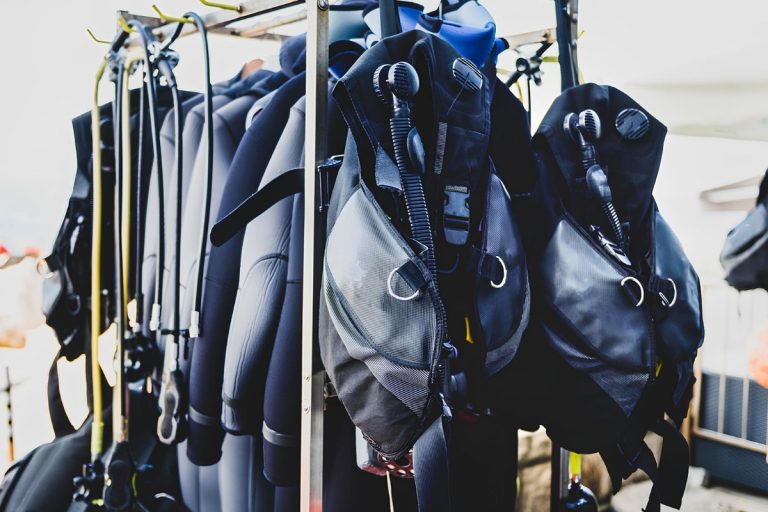- Introduction to Wetsuits and Dry Suits
- Choosing the Right Wetsuit Thickness
- The Anatomy of a Dry Suit
- Materials Used in Wetsuits and Dry Suits
- Caring for Your Wetsuit and Dry Suit
- Fit and Comfort: Women’s vs. Men’s Cuts
- Common Issues with Wetsuits and Dry Suits
- Final Thoughts on Wetsuits and Dry Suits
- Frequently Asked Questions
- Navigating Your Water Adventures with the Right Gear
Introduction to Wetsuits and Dry Suits
Water sports enthusiasts know that having the right thermal protection can make or break an adventure. Whether you’re planning to surf in chilly morning waters, go scuba diving in deeper depths, or paddle through cooler seasons, understanding the differences between wetsuits and dry suits becomes essential for both comfort and safety.
These specialized garments serve as your barrier against cold water, wind, and environmental hazards while allowing you to enjoy extended time in aquatic environments. The choice between a wetsuit and dry suit depends on various factors including water temperature, activity type, personal comfort preferences, and budget considerations.
What are Wetsuits?
Wetsuits are form-fitting garments made primarily from neoprene rubber that work by trapping a thin layer of water between your skin and the suit. This trapped water gets warmed by your body heat, creating an insulating barrier that helps maintain your core temperature. The snug fit prevents cold water from continuously flushing through the suit, which would otherwise drain your body heat rapidly.
Modern wetsuits come in various thicknesses, styles, and configurations to match different water conditions and activities. You’ll find full suits that cover your entire body, shorties that protect your torso and thighs, and even separate pieces like wetsuit tops or bottoms for specific needs.
What are Dry Suits?
Dry suits take a completely different approach to thermal protection by keeping water out entirely. These suits create a waterproof barrier around your body, allowing you to wear insulating layers underneath for warmth. Unlike wetsuits, dry suits don’t rely on trapped water for insulation, making them ideal for extremely cold conditions or extended exposure.
The design includes waterproof seals at the wrists, neck, and sometimes ankles, along with waterproof zippers and entry systems. Many dry suits also feature inflator and exhaust valves that allow you to add or release air for buoyancy control and comfort adjustments during activities like scuba diving.
How They Work: Insulation and Protection
The fundamental difference lies in their insulation methods. Wetsuits use the thermal properties of trapped water and neoprene’s cellular structure to slow heat loss. The neoprene contains tiny gas bubbles that provide additional insulation, while the close fit minimizes water circulation.
Dry suits rely on keeping you completely dry while allowing you to layer appropriate insulation underneath. This system offers more versatility in temperature management since you can adjust your underlayers based on conditions. Both types also provide protection from sun exposure, jellyfish stings, coral scrapes, and other environmental hazards you might encounter during water activities.
Choosing the Right Wetsuit Thickness
Selecting appropriate wetsuit thickness becomes crucial for maintaining comfort and preventing hypothermia during your water adventures. The thickness directly correlates with the suit’s insulating properties, but thicker doesn’t always mean better since mobility and flexibility also matter significantly.
Understanding wetsuit thickness which mm works for Hong Kong conditions helps illustrate how regional water temperatures influence your gear choices. Different regions and seasons require specific thickness considerations to balance warmth with performance.
Understanding Temperature Ratings
Wetsuit manufacturers typically provide temperature ranges for different thicknesses, though individual cold tolerance varies considerably. A 3/2mm suit (3mm torso, 2mm arms/legs) generally works well in water temperatures between 64-70°F, while thicker 5/4mm suits handle colder conditions down to around 50-60°F.
These ratings serve as starting points rather than absolute rules. Factors like your body composition, activity level, and personal cold sensitivity all influence what thickness feels comfortable. Some people run naturally warm and prefer thinner suits, while others need extra insulation even in moderate temperatures.
Factors Influencing Wetsuit Thickness
Water temperature represents the primary factor, but air temperature, wind conditions, and activity duration also play important roles. Surface water sports like surfing or paddleboarding expose you to wind chill, potentially requiring thicker suits than the water temperature alone would suggest.
Your activity level affects heat generation too. High-intensity activities like surfing generate more body heat than passive activities like floating or slow swimming. Extended time in water also increases heat loss, so longer sessions might benefit from thicker insulation even in moderate temperatures.
Common Thickness Options
The wetsuit market offers several standard thickness configurations. Spring suits (2mm-3mm) work well for warm conditions or high-activity sports. Full suits range from 3/2mm for moderate conditions to 6/5mm for very cold water. Some extreme cold water suits reach 7mm or even combine with hoods and boots for maximum protection.
- 2mm-3mm: Warm water (70°F+), high activity levels
- 3/2mm: Moderate conditions (64-70°F), most versatile option
- 4/3mm: Cooler water (58-65°F), shoulder seasons
- 5/4mm: Cold water (50-60°F), winter conditions
- 6/5mm+: Very cold water (under 50°F), extreme conditions
The Anatomy of a Dry Suit
Dry suits represent sophisticated pieces of equipment with multiple components working together to keep you warm and dry. Understanding these components helps you make informed decisions about features, maintenance, and proper usage techniques.
The complexity of dry suit systems means they require more consideration than wetsuits, but they offer superior protection in challenging conditions. Each component serves specific functions that contribute to the overall performance and safety of the system.
Components of a Dry Suit
The main body of a dry suit uses waterproof materials like vulcanized rubber, neoprene, or specialized fabrics with waterproof coatings. Entry systems typically involve waterproof zippers, which require careful handling and regular maintenance to maintain their sealing properties.
Seals at the wrists and neck prevent water entry at these critical points. These seals are usually made from latex or neoprene and must fit snugly without being uncomfortably tight. Many suits also include attached boots or dry socks with separate booties for foot protection.
How to Choose the Right Dry Suit
Dry suit selection depends heavily on your intended activities and local conditions. Membrane suits offer excellent durability and allow maximum insulation layering but provide no inherent warmth. Neoprene dry suits provide some insulation themselves but limit your layering options.
Consider the entry system carefully. Back-entry zippers require assistance to don and doff but offer excellent sealing. Self-entry systems provide independence but may have slightly higher leak potential. Some suits offer relief zippers for extended activities, though these add complexity and potential failure points.
Fitting a Dry Suit: Seals, Undergarments & Valves
Proper fit involves more than just body measurements. The suit should allow comfortable movement while wearing appropriate undergarments without being excessively baggy. Too much excess material creates drag and makes buoyancy control more difficult.
Seal fit requires particular attention since they must be snug enough to prevent leaks while allowing adequate circulation. Wrist seals should be tight but not cut off blood flow, while neck seals need to seal without restricting breathing or causing discomfort. Many suits allow seal trimming for custom fit, but this should be done carefully and gradually.
Materials Used in Wetsuits and Dry Suits
The materials used in thermal protection suits directly impact their performance, durability, comfort, and environmental footprint. Traditional neoprene has dominated the market for decades, but newer materials and manufacturing processes offer alternatives that address various concerns and preferences.
Understanding material properties helps you evaluate trade-offs between warmth, flexibility, durability, and environmental impact. The neoprene types and eco-friendly alternatives available today provide options for environmentally conscious consumers without sacrificing performance.
Different Types of Neoprene
Standard neoprene, made from petroleum-based chloroprene rubber, offers excellent insulation and flexibility. Closed-cell neoprene contains gas bubbles that provide insulation, while the rubber matrix gives stretch and recovery properties. Different cell structures and densities affect warmth, flexibility, and durability characteristics.
Limestone-based neoprene represents an improvement over petroleum-based versions, using calcium carbonate from limestone instead of petroleum as the base material. This alternative reduces environmental impact while maintaining performance characteristics. Some manufacturers also incorporate recycled materials into their neoprene formulations.
Eco-Friendly Alternatives to Neoprene
Natural rubber alternatives derived from plants like guayule or dandelion offer renewable options with similar properties to synthetic neoprene. These materials provide comparable insulation and flexibility while reducing dependence on petroleum-based resources.
Recycled neoprene incorporates waste materials from manufacturing processes or end-of-life products, reducing landfill waste and resource consumption. Some manufacturers also offer take-back programs for old suits, creating closed-loop recycling systems that minimize environmental impact.
Durability of Wetsuit Materials
Material durability affects both performance and environmental impact through product lifespan. Higher-quality neoprene with better construction techniques typically lasts longer, reducing the need for frequent replacements. Factors like UV exposure, ozone, salt water, and mechanical stress all contribute to material degradation over time.
Proper care significantly extends material life regardless of the base material used. Quality construction details like reinforced stress points, quality stitching, and protective coatings also influence durability. Investing in better materials and construction often provides better long-term value despite higher initial costs.
Caring for Your Wetsuit and Dry Suit
Proper maintenance extends the life of your thermal protection gear while maintaining its performance characteristics. Neglecting care routines leads to premature degradation, reduced insulation, and potential safety issues. Understanding neoprene care rinsing hang-drying and storage principles helps maximize your investment.
Regular maintenance also helps identify potential problems before they become serious issues. Small tears or seal problems are much easier and cheaper to address than major failures that might occur during critical moments in the water.
Cleaning and Maintenance Tips
Fresh water rinsing after every use removes salt, sand, and other contaminants that can degrade materials over time. Salt crystals are particularly damaging as they can cut through neoprene fibers and accelerate deterioration. Thorough rinsing inside and out ensures complete removal of these harmful substances.
Periodic deep cleaning with specialized wetsuit shampoos removes oils, bacteria, and odors that accumulate with regular use. Avoid harsh detergents or chemicals that can damage neoprene or compromise waterproof coatings. Some manufacturers recommend specific cleaning products designed for their materials.
Repairing Tears & Leaks
Small tears and punctures are inevitable with regular use, but prompt repair prevents them from expanding into major problems. Identifying damage early allows for simple fixes that maintain the suit’s integrity and performance.
Step-by-Step Repair Guide
Clean the damaged area thoroughly and allow it to dry completely. For small tears, neoprene cement provides strong, flexible repairs that move with the material. Apply thin coats to both surfaces, allow to become tacky, then press together firmly.
Larger tears may require patches cut from similar thickness neoprene. The patch should extend well beyond the damage area for adequate bonding surface. Some repairs benefit from stitching in addition to cementing for maximum strength and durability.
Storage and Handling Best Practices
Proper storage prevents creasing, cracking, and other damage that occurs when suits are folded or hung incorrectly. Wetsuits should be hung on wide hangers that support the shoulders without creating stress points. Avoid wire hangers that can cut through neoprene or create permanent creases.
Dry suits require special attention to zippers and seals during storage. Zippers should be cleaned, lubricated, and left slightly open to prevent the teeth from binding. Seals should be dusted with talcum powder to prevent sticking and cracking during storage periods.
Fit and Comfort: Women’s vs. Men’s Cuts
Gender-specific cuts address anatomical differences that affect fit, comfort, and performance. Understanding these differences helps ensure you select gear that provides optimal function regardless of your body type. The women’s vs men’s cuts fit tips become particularly important for achieving the snug fit required for wetsuit performance.
Proper fit affects not just comfort but also thermal efficiency and safety. Poorly fitting suits allow water circulation that reduces insulation, while overly tight suits can restrict circulation and movement.
Understanding Fit Differences
Women’s cuts typically feature different proportions in the torso, with adjustments for bust accommodation, narrower shoulders, and different waist-to-hip ratios. The torso length is often shorter, while leg proportions may be adjusted for different thigh and calf measurements.
Men’s cuts generally feature broader shoulders, longer torsos, and different hip-to-waist proportions. However, body types vary significantly within genders, so some people find better fits in cuts designed for the opposite gender. The key is finding the cut that matches your specific proportions.
Choosing the Right Cut for Your Body Type
Focus on achieving proper fit in critical areas rather than strictly following gender designations. The suit should be snug without restricting breathing or circulation. Key fit points include shoulders, chest/bust, waist, hips, and limb length.
Consider trying both men’s and women’s cuts if you’re between sizes or have proportions that don’t match typical gender patterns. Some manufacturers also offer unisex cuts or allow custom sizing for unusual proportions.
Comfort Considerations for Different Cuts
Comfort involves more than just size; seam placement, panel design, and flexibility zones all contribute to how the suit feels during movement. Women’s cuts often place seams differently to accommodate anatomical differences and reduce chafing in sensitive areas.
Flexibility panels in knees, shoulders, and other high-movement areas should align with your body’s natural flex points. Poor panel placement can create restriction or bunching that becomes uncomfortable during extended wear.
Common Issues with Wetsuits and Dry Suits
Even well-maintained suits can develop problems that affect comfort, performance, or safety. Recognizing these issues early allows for prompt solutions that prevent minor problems from becoming major headaches or safety concerns.
Understanding common problems also helps with prevention through proper use, maintenance, and storage practices. Many issues result from improper care or use rather than manufacturing defects.
Chafing and Skin Irritation
Chafing typically occurs at seam lines, entry points, or areas where the suit moves against skin during activity. Poor fit, worn seams, or salt buildup can all contribute to irritation problems. Prevention involves proper sizing, regular cleaning, and using lubricants at problem areas.
Skin sensitivity to neoprene or other materials can cause allergic reactions in some people. Rash guards or thin base layers can provide a barrier between sensitive skin and suit materials. Some people also benefit from suits with softer interior linings.
Temperature Regulation Problems
Overheating in thick suits during high activity or warm conditions can be as problematic as being too cold. Choosing appropriate thickness for conditions and activity level prevents temperature regulation issues. Some suits offer ventilation options or removable components for adaptability.
Cold spots often indicate poor fit, worn insulation, or water circulation problems. These issues typically worsen over time, so addressing fit problems early prevents more serious thermal protection failures.
Leaks and Damage: What to Look For
Small leaks often start as minor seepage that gradually worsens. Check seams, zippers, and high-stress areas regularly for signs of separation or wear. Early detection allows for simple repairs rather than major overhauls.
Dry suit leaks can be particularly problematic since they compromise the entire system. Regular pressure testing and seal inspection help identify problems before they cause safety issues or equipment damage.
Final Thoughts on Wetsuits and Dry Suits
Selecting the right thermal protection represents a crucial decision that affects your safety, comfort, and enjoyment of water activities. The investment in quality gear pays dividends through extended use, better performance, and enhanced safety margins during your aquatic adventures.
Consider your specific needs, local conditions, and intended activities when making gear decisions. What works perfectly for one person or situation might not be ideal for another, so prioritize features that match your particular requirements.
Making the Right Investment
Quality thermal protection gear represents a significant investment, but the cost of inadequate protection can be much higher. Consider the total cost of ownership, including durability, maintenance requirements, and performance over time rather than just initial purchase price.
Research manufacturers, read reviews, and if possible, try before buying to ensure you’re getting gear that meets your specific needs. Many dive shops and outdoor retailers offer rental programs that allow you to test different brands and styles before committing to a purchase.
Staying Safe and Comfortable in Water Sports
Proper thermal protection is a safety issue, not just a comfort consideration. Hypothermia can impair judgment and physical ability, creating dangerous situations even in relatively mild conditions. Having appropriate gear provides safety margins that can be crucial in emergency situations.
Regular gear inspection and maintenance ensure your protection remains reliable when you need it most. Develop pre-activity check routines that verify your gear’s condition and proper function before entering the water.
The Importance of Proper Gear Selection
The right thermal protection enhances your water experiences by allowing you to stay comfortable longer and in more challenging conditions. This expanded capability opens up new opportunities for adventure and skill development that might otherwise be limited by thermal constraints.
Proper gear selection also supports environmental responsibility through longer-lasting products and materials that minimize ecological impact. Choosing quality gear that lasts reduces waste while supporting manufacturers who prioritize sustainable practices and materials.
Frequently Asked Questions
What is the main difference between wetsuits and dry suits?
Wetsuits trap a thin layer of water that gets warmed by body heat for insulation, while dry suits keep water out entirely, allowing for layering underneath for warmth.
How do I choose the right wetsuit thickness?
Wetsuit thickness should be based on water temperature, air temperature, wind conditions, and your activity level. Manufacturers provide temperature ratings for different thicknesses.
What materials are used in wetsuits and dry suits?
Wetsuits are primarily made from neoprene, while dry suits can use waterproof materials like vulcanized rubber or specialized fabrics. Newer eco-friendly alternatives are also available.
How can I maintain my wetsuit or dry suit?
Regular rinsing with fresh water, deep cleaning with specialized shampoos, and proper storage techniques are essential for maintaining your suits.
What should I consider for fit when choosing a wetsuit or dry suit?
Focus on snug fit without restricting movement, paying attention to key areas like shoulders, chest, waist, and limbs. Gender-specific cuts are designed to accommodate anatomical differences.
Navigating Your Water Adventures with the Right Gear
Choosing the appropriate thermal protection gear is essential for enhancing your safety and enjoyment during water activities. By understanding the differences between wetsuits and dry suits, their materials, and how to maintain them, you can make informed decisions that align with your specific needs and environmental considerations.






